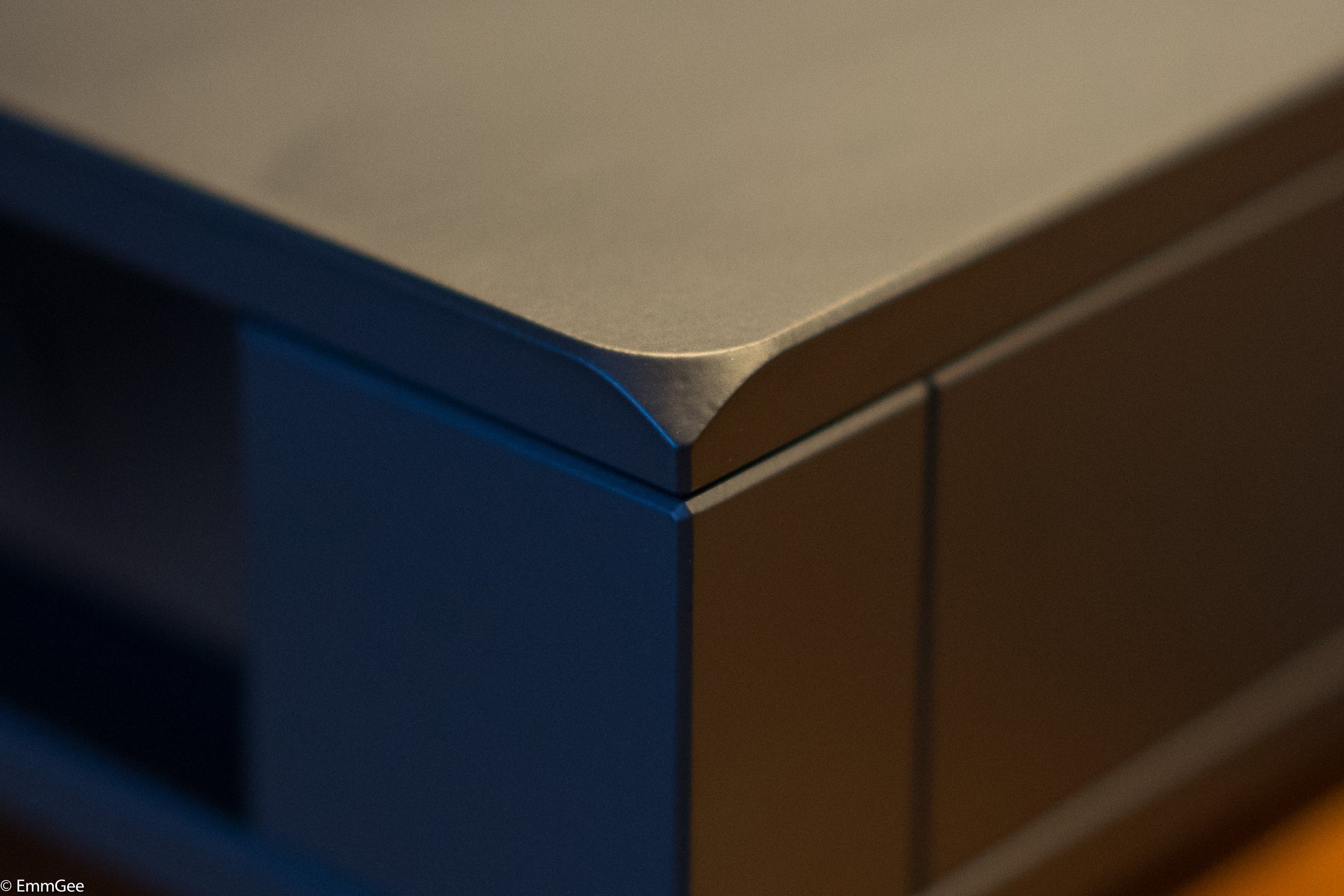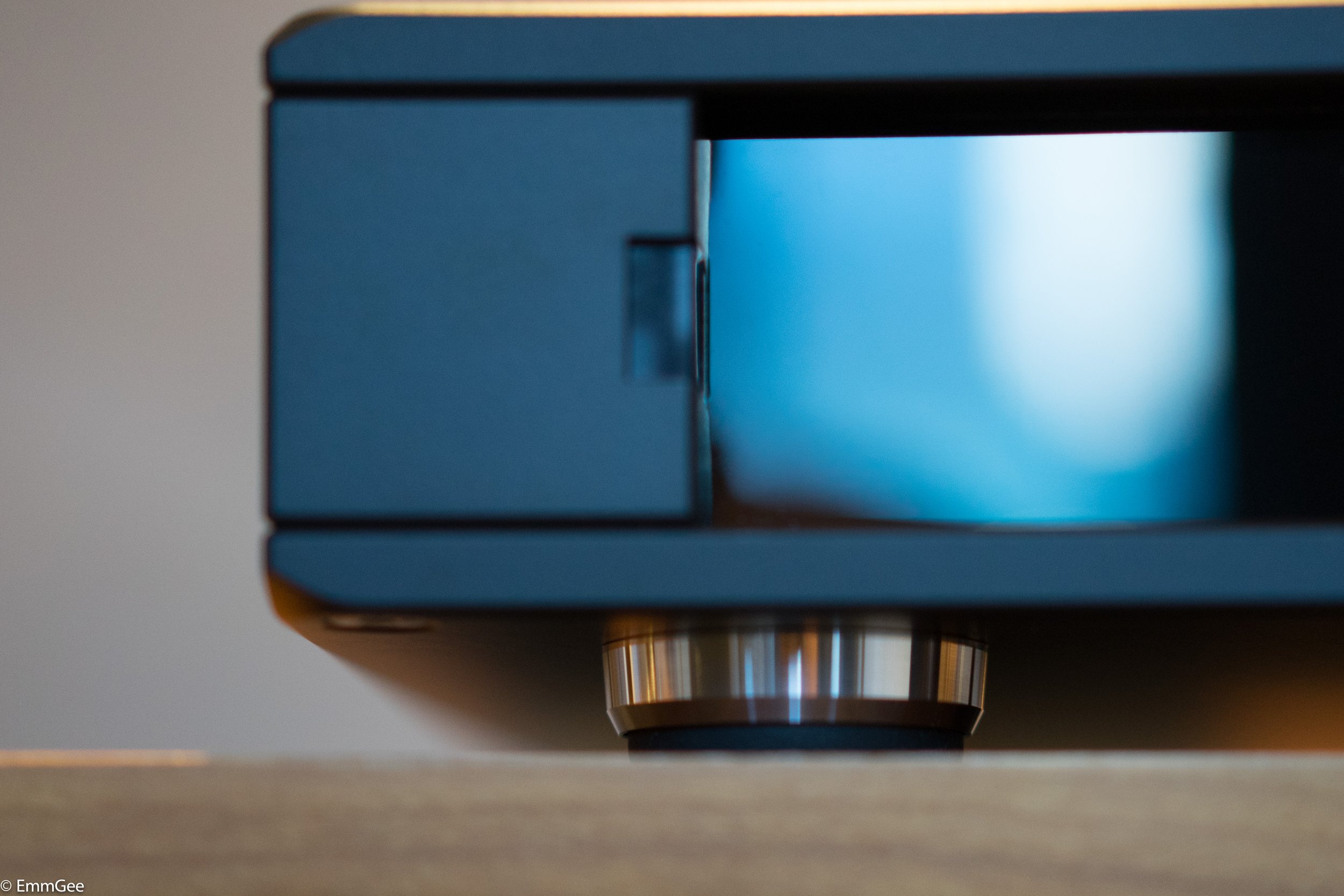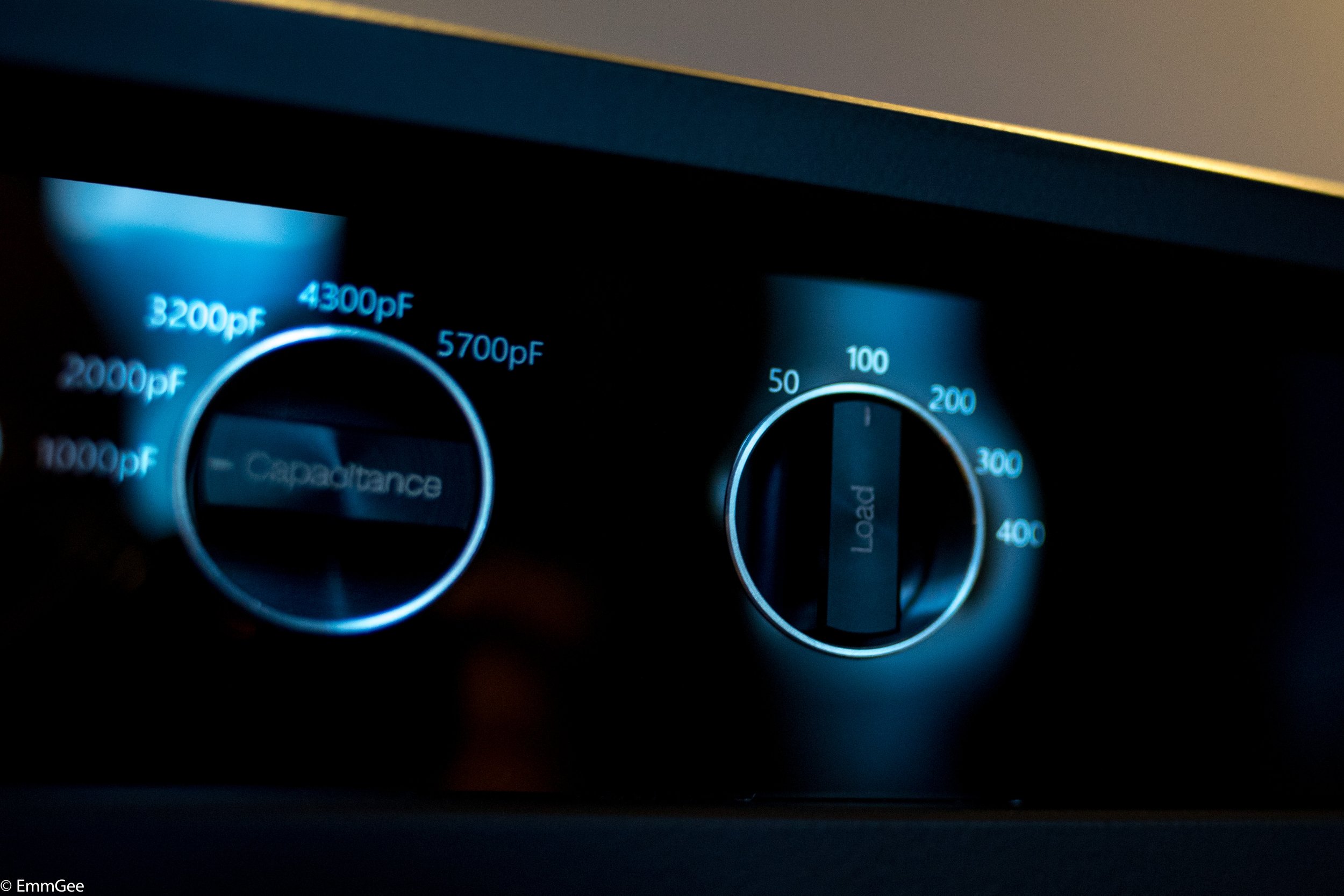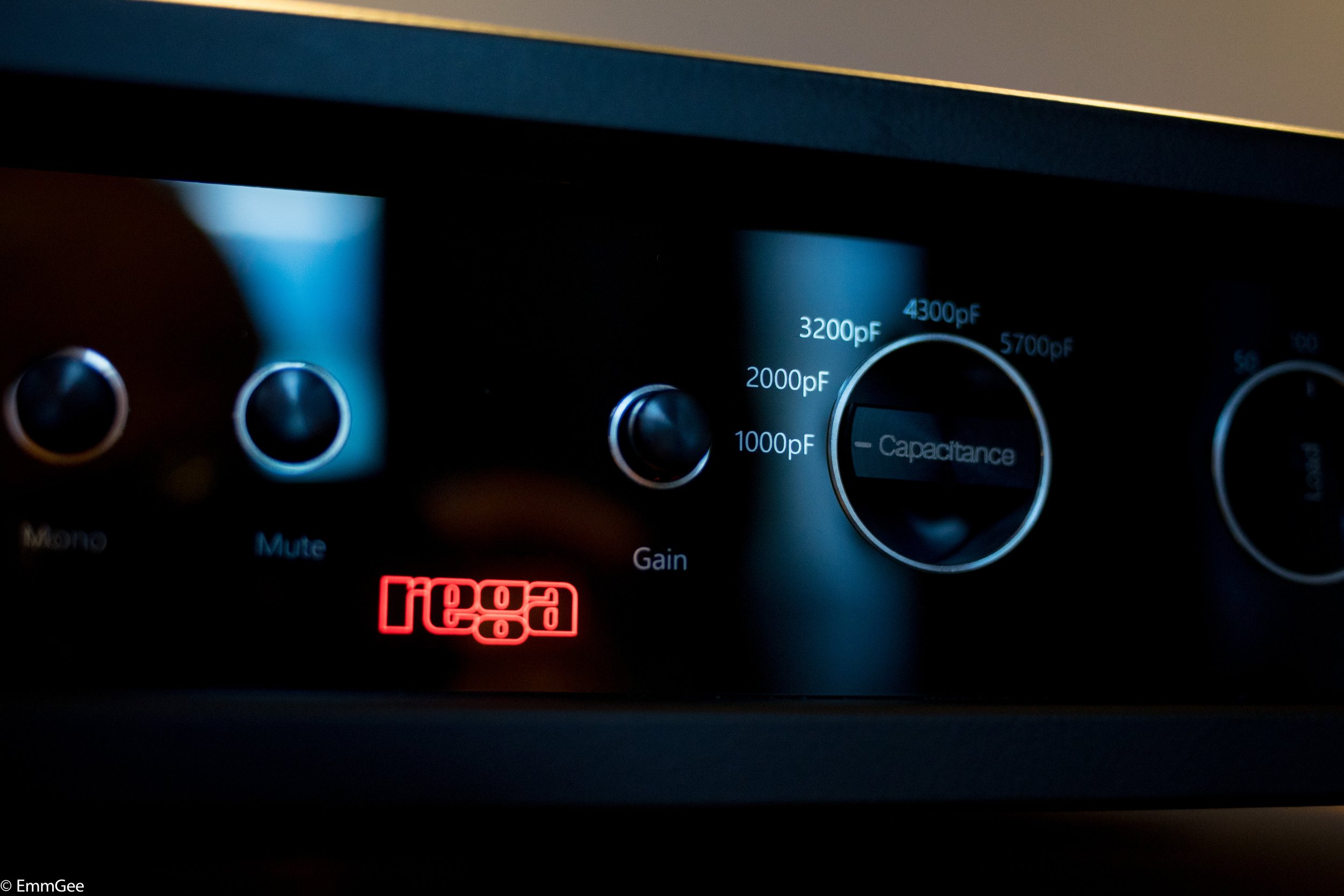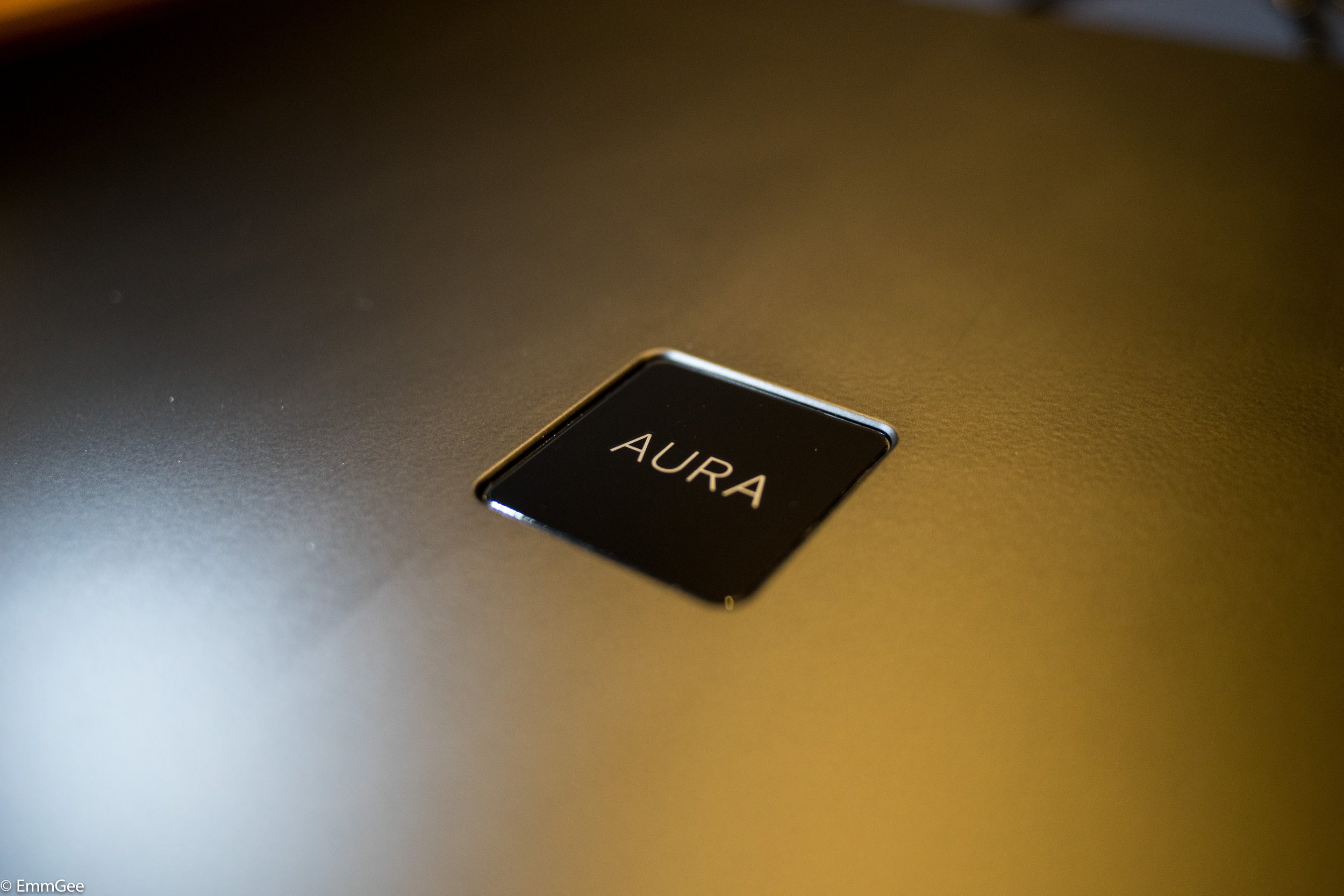Chromey basks in Rega's Aura.
/Rega's reference phonostage, the AURA could be seen as perfect for any high end turntable, but especially the new Rega NAIA…
It's funny, a couple of generations back, phono stages hardly existed. But when CD started to have its moment, a lot of amplifiers began to lose their internal phono capabilities. A record deck requires a sophisticated circuit to both amplify and equalise the delicate signal from the record deck’s cartridge and stylus. In the dark digital days, it was considered an unnecessary addition to an amplifier and was removed by certain manufacturers, some offering a basic add on phonostage, some not. But from this there developed a market for add-on phono stages, some of which from small manufacturers could be better sounding than the propriety one from a major maker! The market for phono stages opened up, and now, you can buy anything from £100 to £100,000, with huge arguments about just 'what' makes the best design.
The cartridge fitted to the end of your turntable's arm produces a tiny tiny voltage, especially moving coil type cartridges. A cartridge is effectively a mini generator. As the record groove turns, the undulating record groove wall moves the stylus side to side and up and down, and the tiny generating system produces a stereo signal from this. (In mono records, information is 'cut' as just sideways movement in the groove.) In voltage terms, the average moving coil, MC, cartridge produces only around 0.0005 of a volt! A terrifyingly low signal level. The phono stage has the hard job of amplifying this very low signal up to around a 1 or 2 volts (5 volts for a balanced signal, on your typical XLR type connections).
That sadly is not the end of the complexity. All records are 'cut' with an equalisation curve, called the RIAA curve, very simply the treble is severely boosted and the bass severely lowered when a record is 'cut' at the studio. On playback, this boost and cut needs to be reversed for perfect reproduction on playback: The bass severely boosted, and the treble hugely reduced.
As you can see from above, the phono stage has an incredibly complex job to do. The Rega Aura is a state of the art piece of electronics designed to do just that, and gain the maximum fidelity from your records. It has been 100% optimised to resolve the 'best' from all low output moving coil cartridges, and been designed to fit universally in to any High End audio system.
The first thing to hit you about the Aura, is its substantial build. 10mm thick aluminium panels form the top and the bottom of the unit, minimising any possible vibrations interfering with the delicate and highly sensitive audio electronics within the case. At the rear are six professional audio connectors. Four professional grade phono sockets provide input from your turntable, and output to your amplifier, with the addition of a pair of balanced fully professional XLR output connectors. A ground terminal and an IEC mains connector. The front panel contains a power switch, mono/stereo switch; this helps reduce noise while playing mono records, a mute switch; handy for changing records, gain high/low selector; depending on just how low output your cartridge is, and fine adjustment of both the cartridge load and capacitance; each cartridge has its own unique settings.
For the technically minded, the AURA can be broken down into four parts; arguably the most important part of any amplifier is the power supply. On the AURA it is simply huge; an oversized high current toroidal mains transformer literally supplies the juice, along with dual balanced power supply with active regulation, with a much higher voltage than is common in any phono stage. The input from the cartridge is directly coupled to the input electronics, in this case a direct connection to an array of FET transistors, delicate enough to accurately boost up the delicate audio signal to a useable level. The signal is then passed on to the middle part of the circuit via a passive high filter, this corrects the treble part of the RIAA curve.
The middle circuit builds on the gain of the first part, and accuratly corrects the bass part of the RIAA equalisation curve actively. Lesser designs combine the RIAA correction in to one active filter, although cheaper, this kind of circuit can both increase distortion and be less accurate. Of course this is a state of the art design, and a no compromise design at that. The final part of the design is a 'flat' amplifier to give a suitable output for your amplifier. Fully balanced to suit direct connection to other balanced designs via the XLR connections, as well as the more conventional phono sockets. Internally, the two channels are built in monoblock configurations on the main high quality circuit board.
In use, we have tried and tested the AURA in all manner of systems. In every case it has excelled in performance. The sensitive FET front ensures high gain and low noise, providing you with a deeper incite in to the recordings. The split passive (treble) and active (bass) RIAA ensures soaring heights, with pin sharp stereo imaging, combined with controlled, clean, deep articulated bass. Kick drums delight in their power, but light and open touch. Cymbals have clarity and depth, with no spit, sizzle or splash. Both male and female vocals have a true authority and power, helped by the AURA's powerful output stage and huge power supply. The overall sonic landscape is smooth, weighty, extended and beautifully detailed. The amount of information retrieval is truly impressive, as is the expansive sound stage. Stereo imaging is holographic, the internal monoblock design of the circuit really helping to maximise the stereo separation. There is a lot of competition in High End phono stages. What marks the REGA Aura out is its utterly organic sound. The way the music starts and stops, its openness and smooth dynamics. It's universality aids its popularity as our 'best selling' High End phono stage, it's ability to extract the best from all low output moving coil cartridges, as well as being optimal for REGA's own excellent cartridges.
If you are in this market, and looking for the very best fidelity for your money. Contact your local Audio T dealer for an audition today.
Thanks for reading
Haden, James, Munir & Dave - Audio T Manchester
If you’ve enjoyed this, why not go ahead and read some more of our other blogs, and be sure to follow us on our social media channels below…
Rega can be found at the following Audio T stores -






